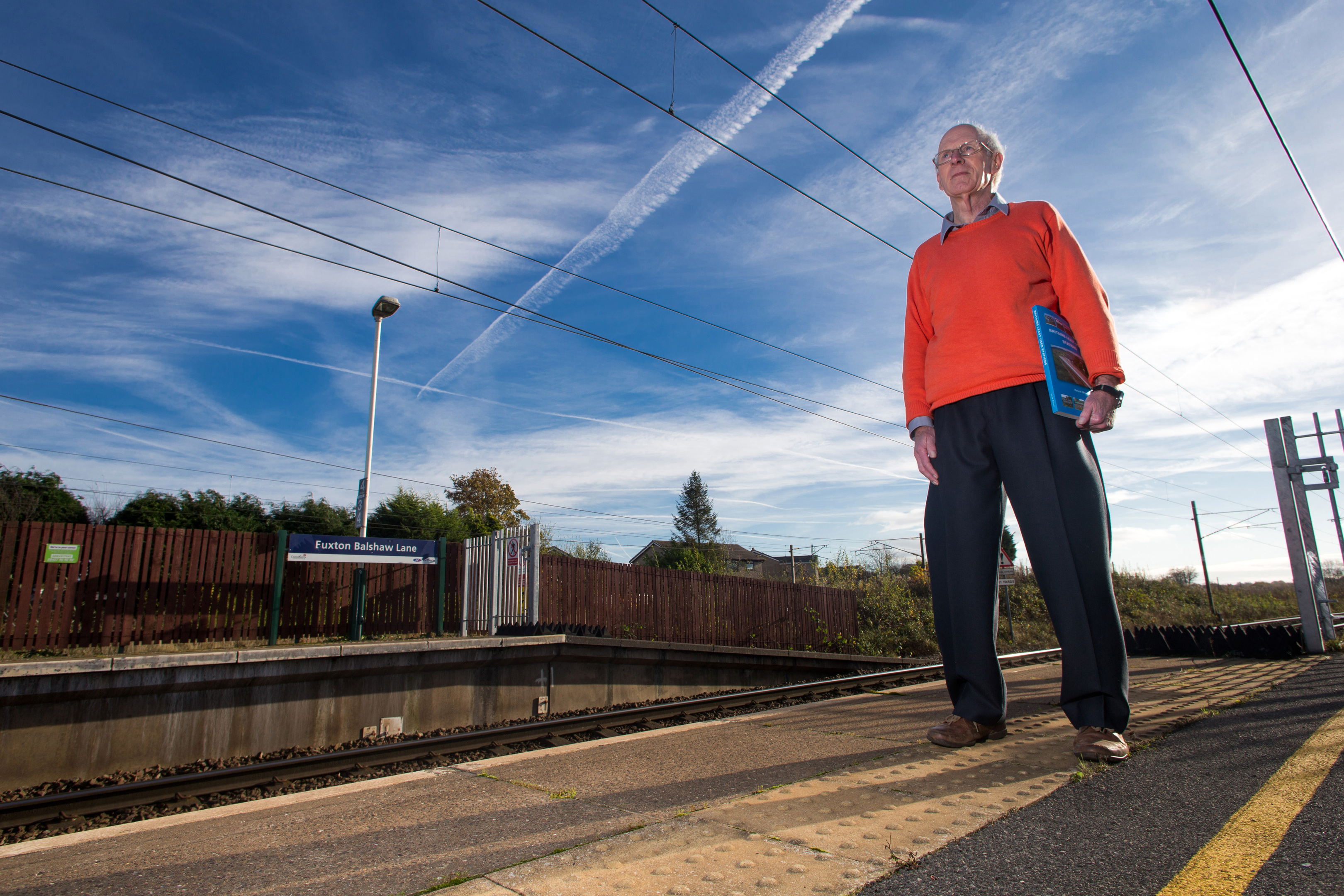
There’s no need to feel second best, though – he’s probably been to more train stations than almost anyone.
In fact, he’s visited every one in Britain. And at more than 2,500 stations the length and breadth of the country, that’s no mean feat.
But although everyone’s heard of the biggies – Edinburgh Waverley, Glasgow Central, Kings Cross and the like – David’s new book celebrates the little used and forgotten stops.
The hefty tome, called Britain’s Least Used Stations, lists those poor wee platforms that see precious few passengers over the course of a year. Not surprisingly, David’s a lifelong fan of railways.
“My interest in railways began in 1957 when my father bought me a book about locomotives to keep me occupied on a train journey from Preston to London.
“In 1998 I got a job as a ticket office clerk. Working on the railway rekindled my interest and, after I retired in 2007, I set myself the task of visiting and taking photos of every station in Britain. By 2011, I had visited and taken photos of every station on the rail network.”
The 68-year-old’s railway odyssey took him from the furthermost tip of the Scottish Highlands down to the far south of England.
In the end he had thousands of photos and decided to gather them in a book.
But he felt it was the neglected stations that deserved their moment in the spotlight.
So he chose 200 seldom used stations to feature – from Teesside Airport, which is Britain’s least-used railway station with a tiny eight passengers last year, to Barry Links station between Dundee and Carnoustie, which is the least used station in Scotland, visited by only 42 passengers last year.
It wasn’t always easy to reach the far-flung stops but determined railway buff David, from Chorley in Lancashire, always got through somehow.
“It was a challenge getting to some stations,” he says. “I had to get a taxi to one and buses to others or even walk up to two miles.
“You really have to plan some trips so that you don’t end up stuck in the middle of nowhere.”
As well as his photos, the 240-page work includes passenger numbers for each stop from 2008 to 2014.
But why did he choose to focus on these half-forgotten stations?
“I just like these little stations,” he explains. “The buildings have often been sold off and taken over by private residents who really started to take care of the places.”
Several Scottish stops are among his favourite stations, including Attadale, Stromeferry and Duncraig in the north-west Highlands.
“The line from Inverness to the Kyle of Lochalsh is one of my favourites,” he says.
“In fact, it’s probably the most scenic route in Britain.
“I always enjoy coming to Scotland.”
David’s wife Shirley stays at home when he heads off on his railway adventures.
He said: “She’s helped me put the book together but she is not really interested in railways or trains.
She’s just happy for me to get out for the day. She says she enjoys the peace!”
And does he have any more railway-based challenges planned?
“No,” he says emphatically. “Nothing else.”
Having seen every station there is to see, some time off the rails sounds like just the ticket!
You can find Britain’s Least Used Stations on Amazon and eBay or by emailing David on davidbrewer20547@aol.com.

Enjoy the convenience of having The Sunday Post delivered as a digital ePaper straight to your smartphone, tablet or computer.
Subscribe for only £5.49 a month and enjoy all the benefits of the printed paper as a digital replica.
Subscribe